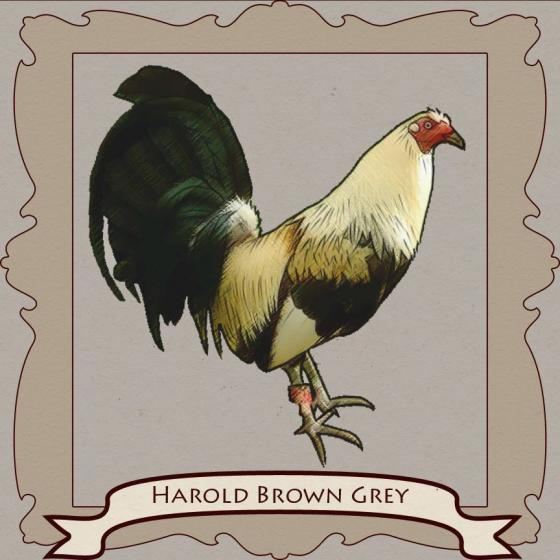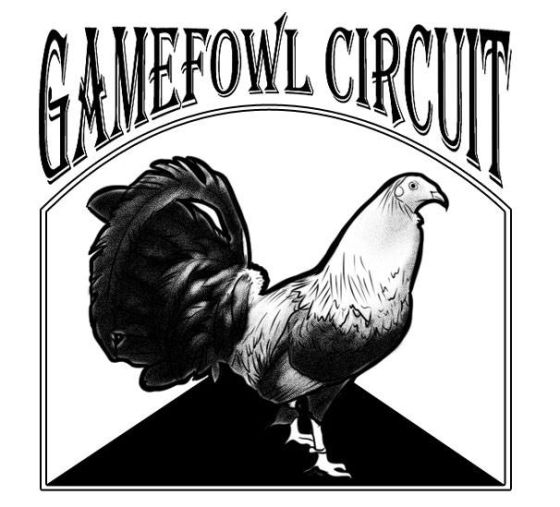In most gamefowl fights in the past, the 'Texas' or the red gamefowl, often an imported American bloodline or cross was the llamado in betting circles. Odds were always against the white feathered rooster or the so called Talisayin when matched with a Texas. Urban legend has it that a Talisayin is the stronger fighter ONLY during a Full Moon (snicker) and the first Quarter Moon of the month. and that one should avoid fighting bright red gamefowl because the power levels are evenly matched for both gamefowl. Yeah right. Other nonsense included: fight only with green or black legged because yellow or white legged gamefowl are LUCKIER during this time.
.
Some of the biases against the Talisayin have been expressed by pundits like a slur against the bloodline:
"In
general, off-colored birds are weaker because there are fewer of them."
"These gamefowl are chosen and bred by those new to the sport and their breeding methods lack the solid foundation of proven and pure bloodlines which are
the base of most red birds."
"Off-colored
birds are like regressive offspring and mostly unpredictable (hence the full moon superstition)."
"Kung manalo Talisayin sa iyo, SUWERTE mo!!"
"Uniformity of
traits and genome stability is rather rare in off-color birds."
Now everything is different. No matter the match-ups, the Talisayin always is the sure bet, especially if the game farm fighting one already has a winning tradition. And more often than not, the Talisayin also gets the lucky wins like the so called last hit. You now get really good fighting gamefowl and more than a sure chance at winning with Greys.
Greys or the Talisayin have had a resurgent winning streak to become the current dark horse sure bet in most gamefowl circuits. Maybe it is because they now have Sweater and Hatch infused in them to make them stronger and more relentless. And the infusion into pure stock Law Greys and Harold Brown Greys as foundation, already known for power hitting, created a new kind of Talisayin with speed and quickness to boot to fight even better.
Here is a short introduction to the bloodline of gamefowl known as Grey or in Filipino, the former underdog Talisayin.
The foundation Greys
Law Greys
Around 1935-1936, Law named his fighitng Greys, Law Greys. In published fight club reports, he used to name his fighters, Canadian Greys. This was so he could remember that some of his fighters were Hanky Dean Greys, bred in Canada for Col. John Madigan. Law Greys were yellow and white legged. All were straight combed. They were the exact same blood as the Red Madigin Clarets.
The Law Greys were infused with O'Connel Albany (hen side) under a Madigan Grey cock. The yellow leg becoming more common with a white leg still expected. A later infusion of McNerney Greys solidified the predominance of yellow legs over the white. Law crossed these on a lot of his other good fowl and advertised and sold a lot of fowl.
A successful cross was the Law greys to Madigan's Texas Rangers. These came dark legged. Therefore, if you have dark legged Law Greys and the trait is due to Law's breeding and not some other breeder afterward. Some Boston Roundhead was also bred into some matings.
As cocker legends have it, those Law cocks would wander for a mile and DRAW another cock into
them and snuff him of his living chicken. More than a bloody heel they had the
DEATH HEEL, really strong hitting roosters.
Harold Brown Greys
Harrold Brown who originated Red Fox Farm and John O Fowler were partners and developed these gamefowl. The strain goes back to 1937 J.D. Perry called them perfect chickens as Post Oak perfected the fowl even further. Some come blue legged just like Harold Browns Red Fox Farm Greys or Post Oak Greys.
The Harold Brown Greys are also known as Silver Back, colored Greys in their Purity or simply called the Silver Greys.
They are an excellent as pure stock gamefowls that can withstand heavy inbreeding for years or used as a foundation for other crosses...when you have a foundation blood that can withstand long term inbreeding to maintain their purity without losing their vigor and other attributes, that shows how special this line of Greys truly are. These greys have the "THUMP" behind their blows, you can HEAR them cut their enemies. You will be proud to own a Harold Brown Grey as part of your gamefowl stock.
The Perfect Talisayin: Regular Greys
The Regular Grey is said to be a combination of three grey families: the Law Grey, the Sweater Grey and the Plainhead Muff Grey. These three excellent and proven foundation bloodlines
were improved by Freddie Wimberly who received Colonel Madigans gamefowl
who late in age gave them to Harrold Brown and John O Fowler and are
the basis of the regular grey bloodline and genetics. The grey feathering is a dominant trait - and an
excellent bird to cross with the Hatch or Albany. These crosses are for
that problem bird in a line up against you.
Greys from E.W. Law and Sweater McGuiness were perfected by John O Fowler and Jerry Hughes.
Regular Greys come green legged, sometimes with yellow, silver duck wings and straight comb. They are medium to low-stationed and are known for power and gameness. Breeders note that they are as powerful and dead game as the Blueface Hatches. They will enhance any cross with other gamefowl, providing agility, dedication, and lighting fast speed. Because of the similarities between the Harold Brown and the Law Greys, you can combine them with other bloodlines or other Greys for genetic enhancement and stability of a strain. In action, the Regular Grey fight like the whirlwind, in the air or on the ground. Most decent gamefowl can and will be hitting his oponent but the Grey has the ability to cut deep being a power hitter, and not just strike his opponent. Other fighting fowl are not deep cutters, but when you get your hands on really proven line of Greys, you have a winner....whether the moon is full or not.
Secret Breeding Tech: Infusion of Grey blood to Maintain a Bloodline.
Cocking sages often say that inbreeding problems (like more regressive traits appearing in offspring), in your pure stock or red bloodlines can be solved via infusion with GREY blood (to the reds). To restore the bloodlines vitality after so many years of inbreeding the reds.
The Regular Grey is known for power and gameness and is a bloodline from a cross of three other superior stock of grey crosses. This is why infusion is a smart remedy because it can bring the new set of genes to somewhat rejuvenate and revitalize mental sharpness, health, and other traits of the inbred red family. It is one of the best-kept secrets among old school breeders but they don’t want to talk about it too much. Another reason why most gamefowl breeders of reds, strangely do not sell off their own Greys.
Other bloodline traditionalists, usually old timers who only fight with their own strains and seldom fought gamefowl that were crosses. These were dyed-in-the-wool line breeders (using an inbreeding system, or breeding crosses only with the same bloodline, using a specimen from another farm).
The gamefowl they pit are mostly uniform looking, and uniform fighting birds, nothing special. Cockers of this cloth will exalt and vouch for the purity and authenticity of their birds\' bloodline as their standard for competition. Until other smarter cockers defeat their pure stock with smartly-crossed murdering gamefowl.
Smart cockers of old knew better, once they notice that their strain is losing vigor, an infusion of Grey blood into the reds will be their secret tech to bring the vigor back without changing their general physical conformation. Of course, this is done as discreetly as possible, because crosses are believed to 'taint' pure stock and undermine the breeders reputation as providers of pure bloodlines.
But today, there is no snobbery anymore as far as infusion of bloodlines into stock is concerned. If pure stock is indeed maintained, it is done so a base bloodline with its identifiable and known traits can be used for infusion to either maintain or improve another bloodline. An outstanding specimen of a pure breeding stock (free of fault) commands a premium price to serious breeders. A pureblood sire bull cock can fetch up to a hundred thousand dollars while significantly less for any of his brothers. Serious gamefowl hobbyists are willing to pay the price to acquire the bull cock.
Crossing a pure grey cock to the red hens will produce all greys (1/2 grey, 1/2 red in pedigree), both males and females. Breeding back the grey offspring stags to the red hens wil give both reds and greys stags and pullets. The resulting genotype will be pure red although they are 1/4 grey 3/4 reds in their pedigree. Thus, the infusion introduces new blood but does not dilute the core genetic bloodline to an extent that it becomes a different fighting cock altogether.
The Fabled Grey / Kelso Cross
Like the Sweater Grey, the Grey Kelso is one of the newer strains that promise awesome fighting prowess in the pit. Combining power hitting, gameness, fighting smarts like weaving and side-stepping and NOT jumping up to meet an attacker but waiting for him to land then launching its own air attack, the Grey Kelso is an improvement of the two strains, with the Grey as the dominant genotype of the two.
Until our next Gamefowl feature, keep checking REACH-UNLIMITED.COM's section GAMEFOWL CIRCUIT for the latest and the most interesting reading on the Filipino's favorite sport.
ONLY ON REACH-UNLIMITED.COM




